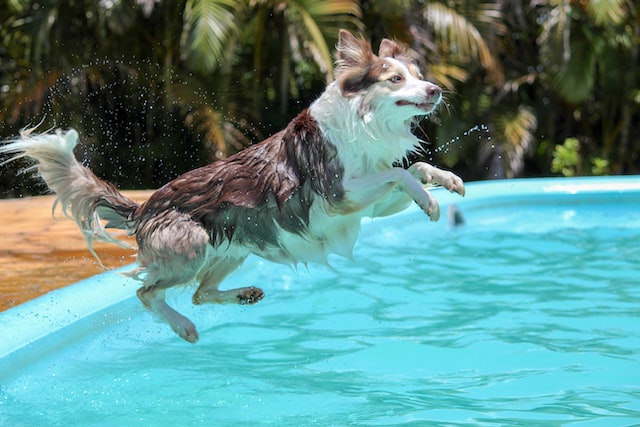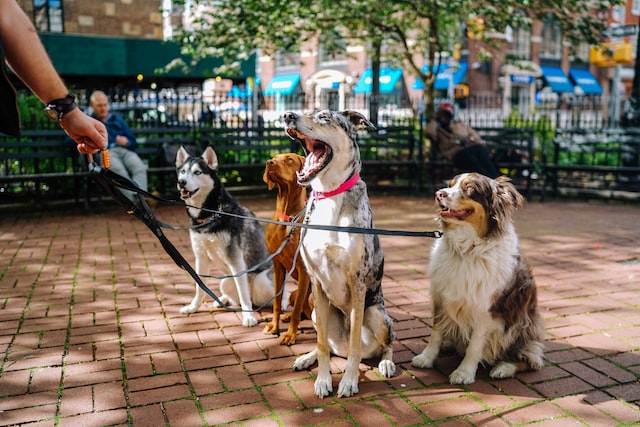Are you planning on going for a swim with your dog? Many breeds of dogs, such as labs, love to swim and cannot resist jumping in every pool and river they see. But, much like children, you must be aware of a few tips to keep your dog safe while you both enjoy swimming in the hot summer months.
Never leave your dog unsupervised near water
Just like your child, never leave your dog alone near water. Some dogs can swim well, while others, especially those that are heavy and have short legs, may sink quickly. No matter how excited your dog is to try and swim, stay with him/her at all times!
Make sure your dog can get out of the pool
Again, this sounds so simple, but make sure your dog can easily get in and out of the pool without your help. If you happen to turn your back, your dog could drown trying to exit the pool.
Never force your dog into the water
Some dogs, even those breeds considered water dogs, do not like water. They may have had a scary experience or do not like it. Never force your dog into a situation that scares him/her. They could also panic and drown or even pull you under the water. Let your dog get used to the water at his/her own pace.
Consider buying a doggie life jacket
Life jackets designed just for dogs are becoming more popular with pet owners who have a pool or camp near the water with their pets. Many different types and styles are available so you can choose the best one for your pet. Be sure and check that the weight limit on the jacket will fit your dog.
After a swim in a pool, be sure to rinse your dog off
Just like us, a dog’s skin can become irritated by the chemicals in a pool. Your dog’s eyes could also become red from the chlorine in the water. After swimming, allow your dog to shake the excess water and use a garden hose to rinse his/her coat to help prevent irritation thoroughly.
Check for swimming advisories
Lakes can be unsafe for humans to swim at times, and an advisory will be announced. If the water is not safe for you, it is not safe for your pet. Keep your dog out of unsafe waters.
Check for strong currents in rivers
Even a dog who is a strong swimmer can panic if he/she is caught in a strong current. Do not let your dog swim in areas where he/she may be swept away.
Always carry fresh water for your dog to drink
Do not let your dog drink from ponds or lakes near farms. Run-off water may bring pesticides or other chemicals into the water that can poison your dog. Carry a bottle of water just for him/her.
Remember the undertow of the ocean
Some dogs get so focused on retrieving a Frisbee that they swim out too far, and an undertow can pull them down. Keep your dog close to the shore in the ocean.
Check for jellyfish
Jellyfish will sting dogs just like humans, so check for jellyfish before letting your dog run into the ocean.
The best thing to remember about keeping your dog safe while enjoying a day of swimming is to treat the dog like a child. Do everything for your pet that you do for your child, and keep everyone safe!









